
MODULE 6 - ELK HUNTING KNOWLEDGE
CHAPTER 3: A TIME AND A PLACE

With an understanding of an elk’s reliance on its senses, and an understanding of how an elk’s movements and activities are centered around its senses, you can begin to see why elk hunting can be difficult. Every situation is not the same, and tips and tactics that work one day in one situation might not work at all the next time.
A LESSON ON THERMALS
Regardless of the situation, the number one thing I am continually thinking about while I am elk hunting is the wind. If the wind (thermals) is blowing down a ridge, and there is an elk bugling down below me, I can’t just take off and head straight to him. “Taking a Chance” with the wind is a sure way to fail. I have to either wait for the wind to switch, or make a big circle around the area and come in from the opposite side. And during all of this time, I have to be constantly aware of not only what the wind is doing right then, but what it will be doing in 5 minutes, 10 minute, 30 minutes, 2 hours, etc.
In a nutshell – and speaking generally – thermals travel up during the day, and from late evening through mid-morning, they travel down. These changes in thermals are caused by temperature differences in the air at different elevations. Cool air is heavier than warm air, so the pressure differences dictate air movements in elk country.
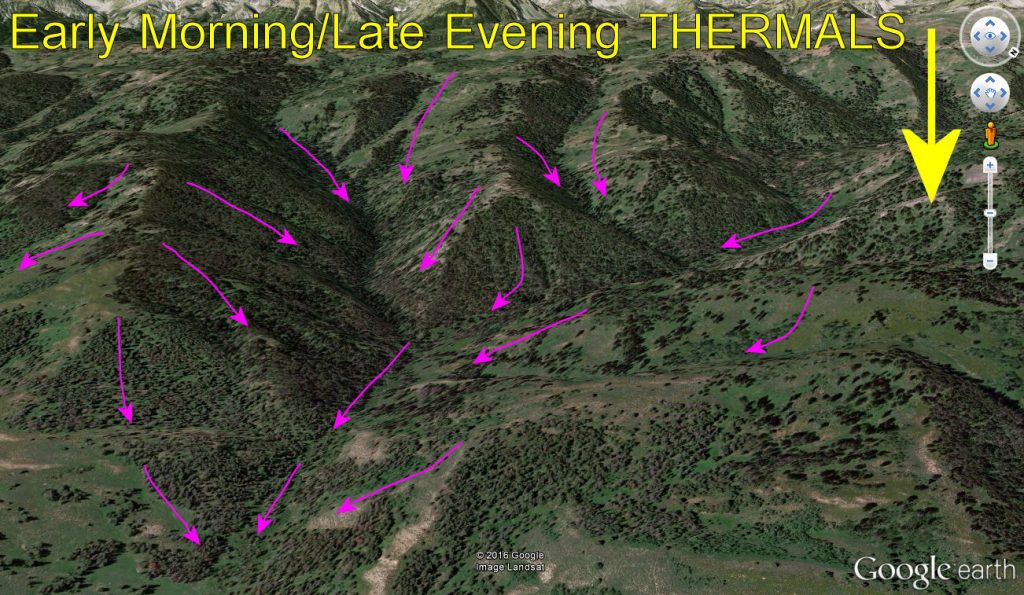
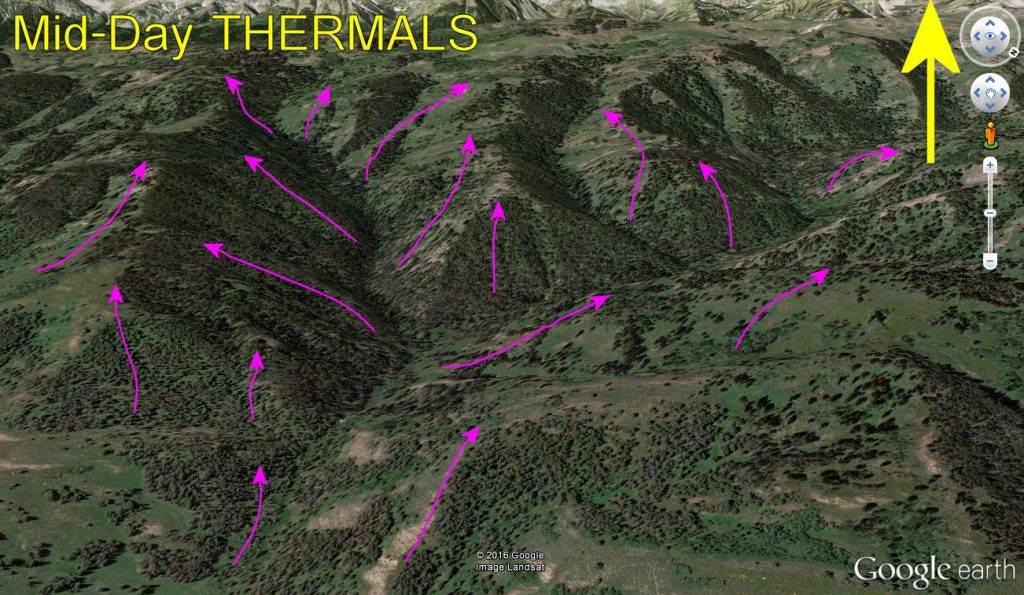
Mountain winds are “diurnal” which means that they reverse direction twice per day. Elk coordinate their travels around these morning and evening thermal transitions. This is when elk are typically the most “active”, but it can also be the most unstable time to hunt them due to the changing thermals. During this time, your approaches need to be made with the constant thought that a wind change is coming, and with a plan to adjust quickly when it does.
The first thermal transition normally occurs mid-morning. Under normal circumstances, this transition is gradual and begins with a slowing of the downhill thermals. As the hillside begins to warm, the thermals become inconsistent – swirly – as they begin moving uphill. In areas where there is a drastic change in landscape (lots of open, dry hillsides surrounded by cool, dark timber), this transition can be quite unstable and take several hours for the winds to become consistent.
Once the majority of the air in the canyon is warmed, the thermals will be consistently pulling up the hill. During the transition though, it is not uncommon to experience constant shifts in wind direction. These shifts are typically 180-degree shifts, and turn from up to down or down to up. However, these thermal shifts rarely turn side to side across the hill. During these thermal transitions, it is important to back off from the common “wind-in-your-face” approach and instead, get on the same level as the elk. An approach with the wind moving perpendicular between you and them reduces the risk of shifting winds going right to the elk.
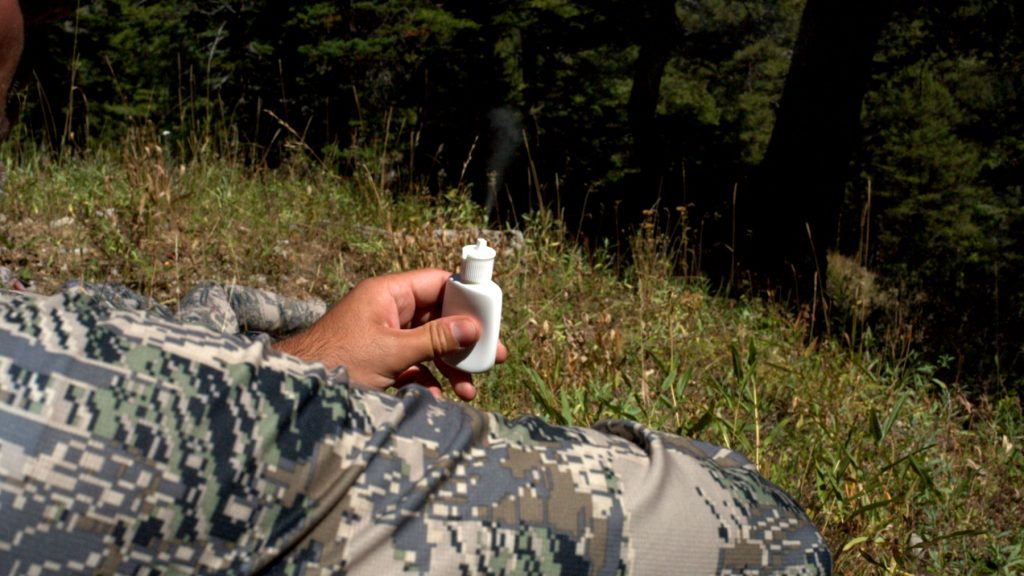
As the ground temperature stabilizes and more closely matches the air temperature, the air will rise, which will create consistent upward flow on the slopes. For the majority of the day, there will be predictable winds from the valley to the ridge line. During this time, setups can be planned with much more certainty, but it is important to remember not to approach bedded elk from below as they will smell you.
The second thermal transition normally takes place late in the afternoon. As the slopes become shaded and cool, the upward thermals will change directions and beginning pulling down the hill. Like the morning transition, the winds will be shifty and unpredictable for a period of time, and will often be accompanied by “afternoon gusts” of wind. Your best bet during this time will be same-elevation approaches with the wind blowing perpendicular to you.
Again, it’s important to remember that just because the wind is pulling uphill in one location, it doesn’t necessarily mean it will be pulling uphill in another location – even just a few feet away. In the morning, the sun will warm some faces faster than others, and these slopes will experience the transitions sooner than those that remain shaded longer. In the evening, the opposite will occur. As you stand on an open ridge and plan your descent into the elk’s bedding area, it’s important to consider that the thermals where you are might be coming up, but the wind might not yet being coming up the mountain on the darker, north-facing slopes where the elk are bedded.
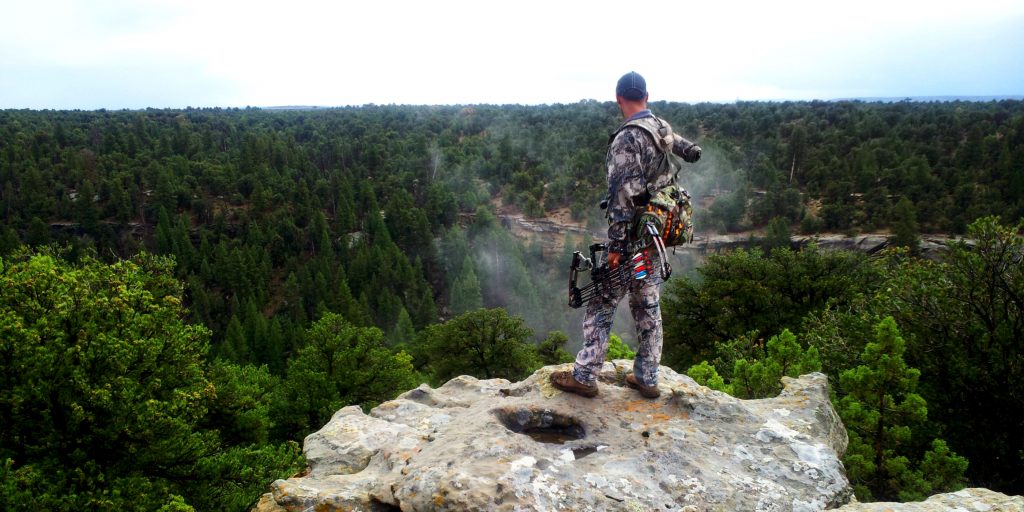
Additionally, cloud cover can delay or disrupt the transition time and provide for unstable winds throughout the day. Even something as simple as a cloud moving through the area can cool the slope and air enough to disrupt stable winds momentarily. Complex or varied terrain can also have an effect on wind directions. Consider the time of day, the direction the slopes face, what comparisons you can draw between the wind and elk movement, and other factors that can affect the wind and how the elk will be able to use it to their advantage.
An elk in a certain area might be far easier to hunt during a certain time of the day, but nearly impossible to get close to the rest of the time. Knowing the terrain, and understanding the thermals – right then, as well as throughout the day – can help you determine the best strategy and the best time to make your move. Sometimes, that means hanging tight for several hours. Sometimes, it means leaving and coming back another day.
CORRELATING WHEN AND WHERE
I have learned that there are certain times of the day that are better for hunting certain areas than other times of the day. Elk are often spotted more predictably in their feeding areas early in the morning and late in the evening. Part of this is due to their patterns, and part of it is due to the fact that their feeding areas are often out in more open areas, which makes them easier to spot. Trying to follow or call to a herd as it moves from feeding areas to bedding, or from bedding areas to feed, however, can be difficult.
A herd bull is usually not comfortable with his cows getting too far away from him. Stopping to wait for an approaching challenger increases the chances of another bull sneaking in and stealing his cows, or allows his cows to get too far ahead of him. Additionally, the elk are moving in a manner that allows them to utilize the changing thermals. If you are following from behind, you are in constant danger of getting winded as the wind becomes unstable and eventually switches directions.
Hunting elk in their bedding area can be difficult as well, due to the fact that they have established this area with one primary concern: safety. Elk don’t often bed in areas that provide easy access and approach for a hunter.
However, within each of these scenarios, there are opportunities to successfully hunt the elk. If I find an elk bugling from below me in their feeding area and the wind is blowing down to him, I will often move over a ridge or two and drop down to the bottom, then come across to set up on the elk at the same level. This requires a lot more hiking and patience, but ignoring the wind will result in failure far more times than not. Refer to the Module 8 on Set Ups for more details, but getting on the same level as the elk before you set up will definitely lower the impact of the thermals and increase your opportunity to get close.
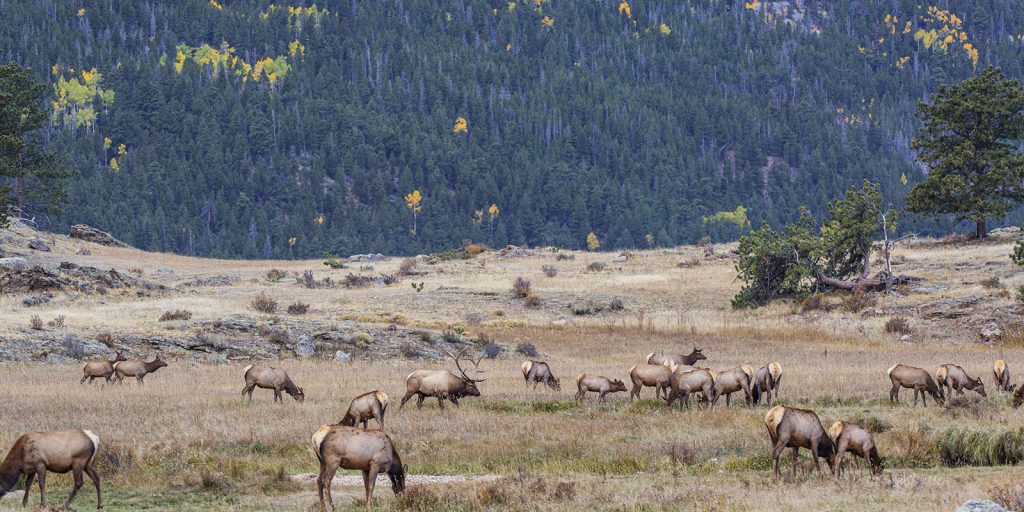
If I find a herd that is on the move from feed to bed, or vice-versa, I have two options. First, if it is still early enough in the morning and the thermals are still consistent, I can pressure the herd from behind and try to get close enough to set up and turn the bull. If I know the thermals are going to be questionable though, I will move over a ridge or two and parallel the elk as they move to their bedding area. Once they are there, I will stay a safe distance away and wait for the thermals to stabilize. Sometimes, that is an hour or two, or even more. I am an aggressive hunter, but I am patient when I need to be.
Patience is very important as you move in to hunt elk in their bedding areas. They will be listening and watching for approaching danger. Sometimes, the thermals on the open, hot ridge will be pulling up the mountain, while the thermals just a few feet away on the cool, north-facing slope will be moving completely opposite. A slow approach, constantly checking the wind and minimizing sound and movement as you close the gap is key. Then, after I’ve patiently worked in close, I can get aggressive. But being aggressive at the wrong time – especially when the wind is not stable – is a sure recipe for failure.
SUMMARY
Consistently successful elk hunters recognize that an understanding of elk behavior throughout the year, as well as throughout the day, is vital to success. The more you are able to understand an elk’s thinking and actions, the more opportunities you will have to get close to the elk. Pay attention to the factors that enable an elk to use its senses, and work to minimize the effects of those factors as they relate to you getting close to the elk.
With this understanding of basic elk habits, movements, and survival skills, it’s time to put this knowledge into action and head into the field!
Click ‘Next Module’ Below to Continue to Module 7: Locating Elk




